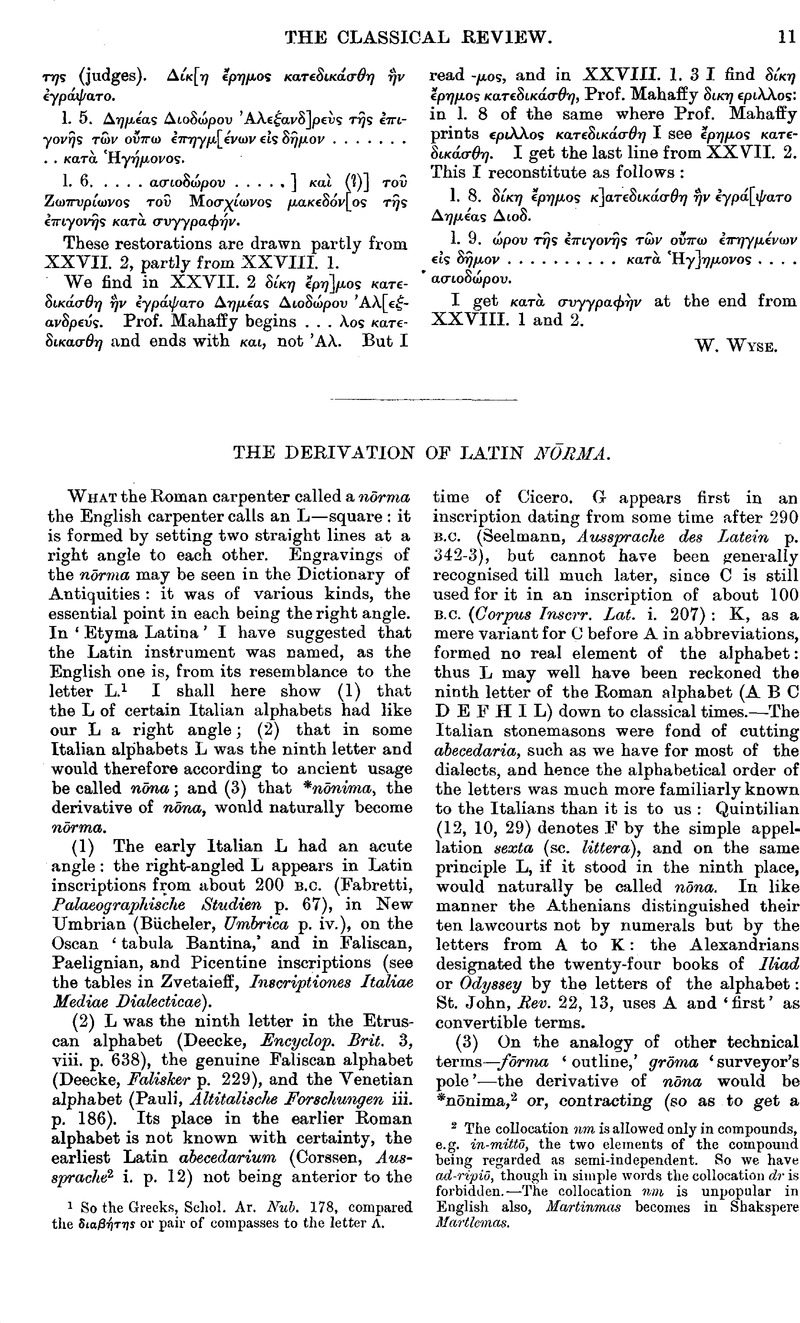No CrossRef data available.
Article contents
The Derivation of Latin Nōrma
Published online by Cambridge University Press: 27 October 2009
Abstract

- Type
- Review Article
- Information
- Copyright
- Copyright © The Classical Association 1892
References
page 11 note 1 So the Greeks, Schol. Ar. Nub. 178, compared the διαβτης or pair of compasses to the letter A.
page 11 note 2 The collocation nm is allowed only in compounds, e.g. in-mittō, the two elements of the compound being regarded as semi-independent. So we have ad-ripiō, though in simple words the collocation dr is forbidden.—The collocation nm is unpopular in English also, Martinmas becomes in Shakspere Martlemas.
page 12 note 1 These derivations are simpler than Corssen's connexion of carmen with Sk. cásman- ‘praise,’ and of germen with Sk. gárbhas ‘embryo’: the root-vowel of cásman- is e (Lat. cēnseō, Brugmann, Grundriss i. p. 292) not a, and the root of gárbhas does not appear elsewhere in Latin (certainly not in gremium). Further, according to Brugmann (ut supra p. 429), whose view has certainly not yet been disproved, *casmen would in Latin become *cāmen, not carmen: for which reason also we cannot derive germen from gerō, as this would only give *gesmen, *gēmen.




